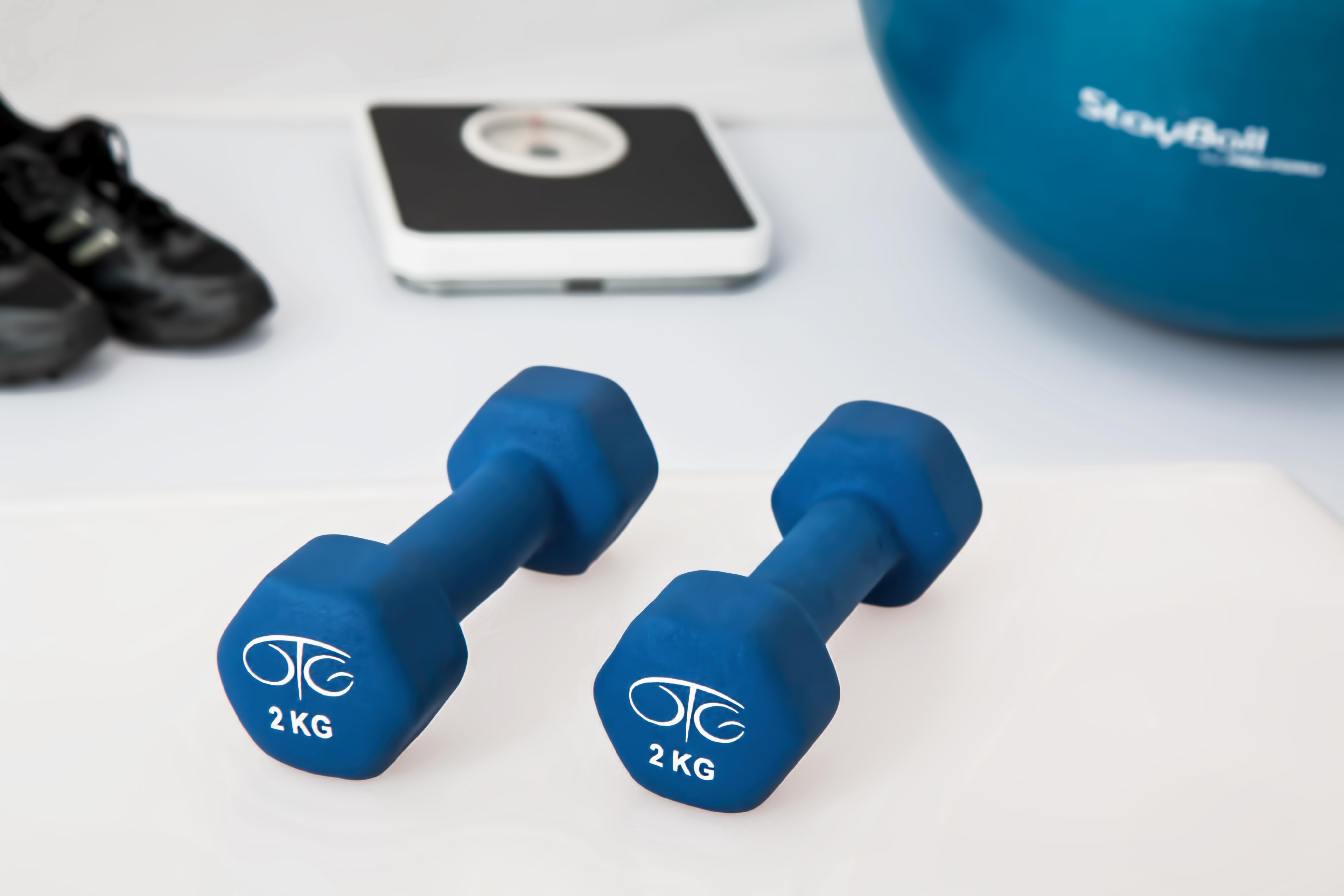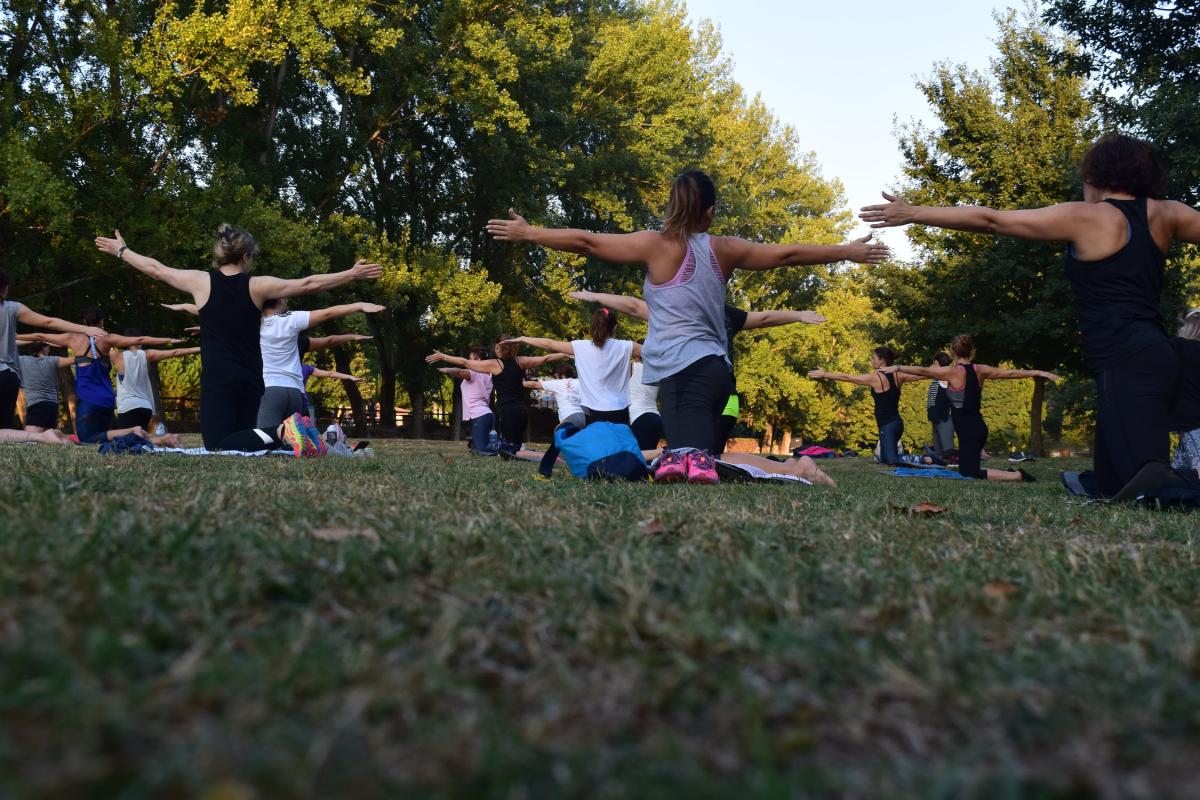Many of us want to lose a little weight and get fitter, stop smoking, drink less, eat more healthily - but struggle to put that into action in a sustainable way.
Behavioural scientists define this problem simply as the ‘Intention-Action’ gap - we generally have good intentions to do some or all of the things that we know are good for us - but frequently procrastinate, delay and may end up failing to execute any of them.
For example, most adults know exercise is good for them and would like to do more, yet global studies have shown that between 36% to 55% of people never manage to convert intention into action.
Helping people get fit using a tailored support network and exercise programme, an innovative fitness company called EliteTogether is having astounding success in helping overweight people achieve their goals by applying a little (intuitive) BE in the programmes they run in the North East, where obesity rates are the highest in England at 31% and inactivity rates sit at 24%.
Participants are regularly losing tens of pounds or more in a matter of weeks and becoming so motivated as a result that they sign up again to lose more.

EliteTogether’s 7-point plan is grounded in behavioural science:
- First, people sign up to a concrete goal (lose 20lbs/9kg) within a 6-week deadline. Behavioural science tells us that we are more likely to be successful in achieving a goal by making it specific. It helps to make us feel more committed as it’s harder to fudge the numbers. It also gets us thinking about how we might go about meeting that goal. For instance, if we need to lose 9kg in 6 weeks, it means we need to be losing around 1.5kg per week. And suddenly, we realise that this task is going to take some effort!
- Second - and this is the innovative part - the 6-week programme is free IF people achieve their goal within the deadline. That's a £200 fee returned if they are successful. All they pay is a £20 admin fee for the 6-week block. This is a great application of loss aversion, an important concept in behavioural science which observes that losses typically loom larger than gains; so the pain of the potential payout drives participants on in striving for their goal. Pact and stickk.com websites also have a similar approach to achieving goals. The fact that the programme is advertised as free probably helps to hook people in too.
- Third, the fitness sessions are designed and run by experienced trainers (influential authority figures) meaning that all that’s required of participants is that they turn up to the session and do what they're told. When people live busy, stressful lives which are already full of decisions and choices it helps to have a decision free zone every once in a while. Like the successful British Military Fitness programmes, the sessions help keep motivation high and also means participants aren’t taxed by thinking about what exercises to do, when and for how long - tricky stuff when you're a fitness novice and exhausted already. In addition to three supervised training sessions at their low-key studio each week, people are also given a tailored meal plan and list of additional training sessions to complete in their own time, providing further structure. Interestingly, EliteTogether don’t even call themselves a ‘gym’, reframing themselves as a support network, and moving away from traditional perceptions of what it means to exercise.
- Fourth, every week, there is a weigh-in providing regular feedback on progress to target. Psychologists have found that receiving personalised, regular feedback is a key motivating factor for most people which can keep them engaged and ultimately help them to achieve a goal. Knowing we are making progress week on week can help us believe a goal is possible.
- Fifth, the group context removes key barriers to participation. Since all participants have weight to lose there is a common purpose and a sense of ease and belonging because everyone is in the same boat which reduces anxiety and embarrassment about being seen in bulging lycra or struggling to run or lift weights. The studios are private which removes a key social barrier and the often underestimated fear of attending a commercial gym where overweight people may feel intimidated. These peer effects or social norms help bond people together and foster a sense of shared mutual support, the sort of collective spirit seen in AA meetings. One participant (who lost 35lbs) said "there was a safe place I could go to, free from judgment, where everybody has the same goal."
- Sixth, if people succeed in meeting their 'lose 20lbs in 6 weeks' goal, they can roll their £200 cash back straight into a new 6-week block with a new goal of an additional 20lbs to lose. This makes it easy to sign up to another course and reduces the pain of paying. Participants, flush with success, may also be elated and in what behavioural scientists call a ‘hot state’ - an excited, emotional state of mind - spurring them on to sign up to do it all again...
- Finally seven, breaking weight loss down into 20lb targets also helps to chunk up a broader goal to 'lose weight' into a series of more manageable and achievable, interim goals. Research has found that small, initial wins or progress can build a sense of momentum to motivate and drive us to keep going. One participant said "I'm going on to do it again in January as I have loved the success I have had and feel so much better within myself and I'm excited to get started on smashing another 20lbs."
The person in the photo above has lost over 200lbs (over 90kg) and countless people have lost 20, 40, 60lbs so far. Their success in the North East of England has led to expansion elsewhere in the UK too.
Each of the seven BE-grounded strategies above are often effective in generating behaviour change, but perhaps the key to success here is that the whole is bigger than the sum of its parts; that each tiny component has been combined into a holistic approach to create an incredibly effective programme.

How BE is encouraging people to live more active lives
We used many of these approaches as well as others in helping to shape a city sports organisation’s strategy to encourage its citizens to be more active. We knew that the busy lives people lead meant that again the intention-action gap would be prevalent and although people want to or know they need to be more active they often fail to act and make physical activity part of their daily routine.
We recommended developing communications which leveraged social norms, by using imagery of other people 'like them' to reassure them that the activity or session was designed for them at their relatively inactive, ‘unsporty’ level, not seemingly fit, lean people. Psychologists have found that we tend to want to do what others do, especially people like us. This type of communication also reassured citizens and helped make them feel less daunted by the prospect of sport. Like the EliteTogether participants, people were often intimidated by sports or exercise sessions catering to the already physically fit and suffered feelings of fear of failure or social judgement. In addition, communications which appear to be targeted at already physically active people may not even get the inactive individual’s attention since they may simply lack relevance and be too far removed from the reality of people’s lives.
We also recommended strategies which emphasised starting with small, achievable goals and activities, chunking up the overall and often daunting goal of becoming fitter - just as EliteTogether sets its participants an achievable weight loss goal. For example, promoting simple ways of integrating a little exercise into routines and ‘piggybacking’ these onto existing habits. Behaviour change experts coined this term for the way in which new behaviours can often be built into firm habits by tagging them on to existing routines. For example, people might start walking some of the way to work rather than taking the bus - piggybacking exercise onto the commute, or going for a walk at lunchtime, piggybacking simple activity to the day at the office. This is particularly important for people who tend to be ‘all or nothing’ exercisers or those who feel their lives are so tumultuous and stressful that it’s impossible to fit any exercise in.

Using behavioural science to break the vicious circle of the unhealthy lifestyle
Many people who do no exercise are often those whose lifestyle incorporates multiple unhealthy behaviours such as smoking, eating poorly or drinking heavily. These traits often go hand-in-hand, trapping individuals in a vicious circle; people’s unhealthy routines and habits will be intertwined with each other, often triggered by boredom and loneliness and perhaps linked with other financial or relationship stresses. This can make changing behaviour even more difficult for people since it can feel very daunting and disruptive to change too many things in their life at once.
We worked with a local authority to look at how they might develop a holistic health improvement service using behavioural insights for this group of people. Our recommendations drew on insights from scientific research into habits and looked at how people might disrupt their existing habits to substitute a healthy behaviour for an unhealthy one or ‘piggyback’ a healthy behaviour onto an existing routine. Asking people to simply stop doing something can often leave an emotional and social void in their lives - think of smoking or drinking down the pub - so having healthier alternatives such as a Zumba class or going for a walk in the park with a friend to slot into the gap can often make the transition a little easier. And again, we focused on how people might be encouraged to begin with small, achievable goals which might help to get them started and feel motivated to make further changes.

Leveraging the BE concept of reframing to help smokers give up
Smoking is another problem behaviour where people suffer from an intention-action gap. A significant proportion of current smokers have intentions to quit smoking, yet fail in their attempts or don’t even attempt to quit. So interventions to help people quit for good are valuable.
Sometimes, a single, often emotive experience can trigger people to change their behaviour for good. They usually know they should be taking action before that, but sometimes it takes one moment or experience for a complete and full realisation to really drive it home that they desperately need to make a permanent change.
Five GP practices in England participated in a trial testing this effect on over 500 smokers over the age of 35. Each participant had their lung function tested using a breathing apparatus known as a spirometer which measures forced expiratory volume in one second, FEV1 (how much they could breath out in one second). This tests how well the lungs are functioning or if there is any lung impairment, caused by smoking for instance, or asthma or pneumonia.
The measure of lung function can also be used to calculate a ‘lung age’ figure which can illustrate the premature lung damage caused by smoking. For example, a 42-year-old smoker may have the lungs of a 67-year-old non-smoker. For people less numerate and less able to comprehend health metrics, lung age is likely to be much easier to understand than FEV1 and so is likely to be a more powerful and emotive number. It also provides the smoker with a simple reference point against their current age.
Participants in the control group were simply told the figure for their lung function, whilst those in the intervention group had their lung function number converted into their ‘lung age’. Both groups were encouraged to quit and provided with details of quitting services.
Those told their ‘lung age’ were much more likely to quit smoking. Independently verified quit rates a year later stood at 13.6% and 6.4% for the intervention and control group, respectively. And the worse state people’s lungs were in, the more likely they were to quit.
Qualitative feedback from healthcare professionals administering the programme illustrated the powerful and dramatic effect of this simple and easy to communicate number. One commented: “Literally you’d see the blood rush out of their face when they saw the numbers, and they realised they had a significant problem. And that was your quintessential teachable moment. So you grabbed it with both hands.”
Another said: “If their lung age was older than their regular age, they would often go out of there saying ‘Oh, I’ve got to quit smoking, I’ve just got to quit smoking!”
It is also a concept that is far easier to understand than other health parameters. As one professional explained: “[Lung age] is a meaningful concept to them. That was something that they could relate to. You know, a 40 % reduction [of lung capacity], to me, doesn’t mean very much.”
In conclusion
We all know we should be leading healthier, more active lifestyles. And in a perfect world we would! But in our not-so-perfect world, full of daily stressors, chaos and unexpected calamities it’s much harder to make sure we do what we intend to do.
Behavioural science can offer proven techniques and concepts to help us carry through on our well meaning intentions and turning then into reality . Whether it’s quitting smoking, drinking less, eating more fruit, veg and wholegrains and less sugar, doing some daily exercise - or all of these BE makes these goals easier to achieve.
What’s more, these simple changes are often virtually costless and, when a number are combined, we can create something that has an even greater reach, making strategies and solutions even stronger.
How BE is transforming our lives 24/7 series - article 2
Behavioural economics (BE) is still a buzzword in many sectors, even after breaking into mainstream thinking several years ago and making a significant difference to our everyday lives.
In something of a salute to this, we are running a series of articles over the next 12 months to take our readers on a 360 degree tour of how behavioural science is transforming our lives 24/7; how it is shaping better outcomes for us, enhancing communications, increasing our engagement and response rates and making us healthier and better off.
Each part of the series will zoom in on a particular area or sector.
Sources:
Rhodes, R.E., de Bruijn, G.J. How big is the physical activity intention–behaviour gap? A meta-analysis using the action control framework. Br J Health Psychol. 2013;18: 296–309; Godin G, Conner M. “Intention-behavior relationship based on epidemiologic indices: an application to physical activity”, American Journal of Health Promotion. 2008 Jan-Feb; 22(3):180-2.
Primary Care Providers’ Views on Using Lung Age as an Aid to Smoking Cessation Counseling for Patients with Chronic Obstructive Pulmonary Disease https://www.ncbi.nlm.nih.gov/pmc/articles/PMC4433592/
